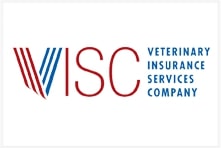This article was originally printed in the July/August 2024 issue of the California Veterinarian magazine.
Growing up, I always wanted to be with animals. After graduating from college, I started to spend time at the local zoo. The zoo superintendent suggested that I pursue a career as a veterinarian, allowing me to spend my life working closely with animals.
I obtained a BS degree in zoology at the University of Gujarat in India as well as a BS degree in natural resources and wildlife management from the University of Florida. In 1987, I earned a degree in veterinary medicine from Bombay Veterinary College in India. Wanting to practice in the United States, I enrolled in the Educational Commission for Foreign Veterinary Graduates (ECFVG) program and completed rotations at the Animal Medical Center in New York and at the University of Missouri. And, in 1994, I purchased the Cupertino Animal Hospital, where I still practice today.
It was in the course of private practice that I discovered my true passion for veterinary otology. I found that I and many other veterinarians faced challenges in treating ear diseases in dogs, cats, and rabbits. Many of these conditions would return after treatment, sometimes leading to total ear canal ablation and partial pinnectomy, removing portions of the ear.
Even after consulting with leading teachers and practitioners on how to treat stubborn ear diseases, I was not having much success in my practice treating ears. Unfortunately, veterinary medicine offers limited training in otology. Veterinarians oftentimes think otology is all about dermatology, which couldn’t be further from the truth. I followed dermatology concepts to treat ears for years and I faced failure after failure.
In search of answers, I started looking into human medicine, and that’s where my real journey with veterinary otology began. Attending human ENT training programs and studying ear anatomy, physiology, pathology, and pathophysiology, I found that human ears and diseases are identical to animal ears and diseases. The difference is a little variation in shape and size—and nothing else! I soon realized what was missing in veterinary otology: when a human being has an ear problem, they go to the ear specialist—not the skin specialist. It became clear that these persistent ear conditions in animals have nothing to do with allergies or atopic dermatitis, but rather what’s going on inside the ear.
I modified my techniques to incorporate human ENT practices and applied this knowledge to my animal patients. I started by identifying ear diseases and then treating them, rather than outright removing the organ after dermatological treatments failed. What a drastic difference in the outcome! Pet owners started noticing the difference, too. With less or almost no surgical discomfort and faster recovery, pets still kept their ears but had no ear disease. What a concept!
Today, I continue to combine veterinary and human otology, using one to inform the other. I became the first veterinarian member of the American Association of Otolaryngology and Head and Neck Surgery Foundation, the largest ENT organization. I even give talks at human ENT conventions. Some highlights include being invited to talk at the 2019 World Congress on Endoscopic Ear Surgery at Harvard Medical School, being the keynote speaker at the International Society for Otitis Media’s Virtual Symposium, and speaking at the International Workshop on Ear Surgery in Modena, Italy. I have also taught endoscopic ear surgery courses at the Oquendo Center in Las Vegas, in Belgium, and at my own clinic with Karl Storz Endoscopy.
There is so much a veterinary professional can gain by following human ENT training. Otology has not been explored in veterinary medicine, and believing that dermatology will cover otology is an outdated concept. I encourage my colleagues to join human medical societies, organizations, and academies—otological or otherwise. Don’t be afraid to invest specifically in education, and don’t stop learning. Medicine is constantly changing. Better diagnostics, technologies, and treatments are always being discovered. You need to keep up with the times—what you learn today can be proven wrong tomorrow!








